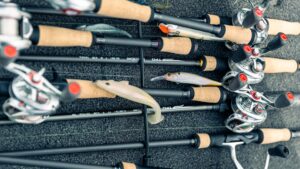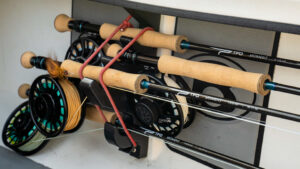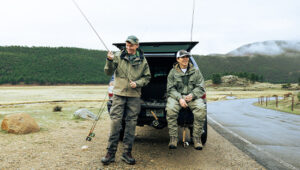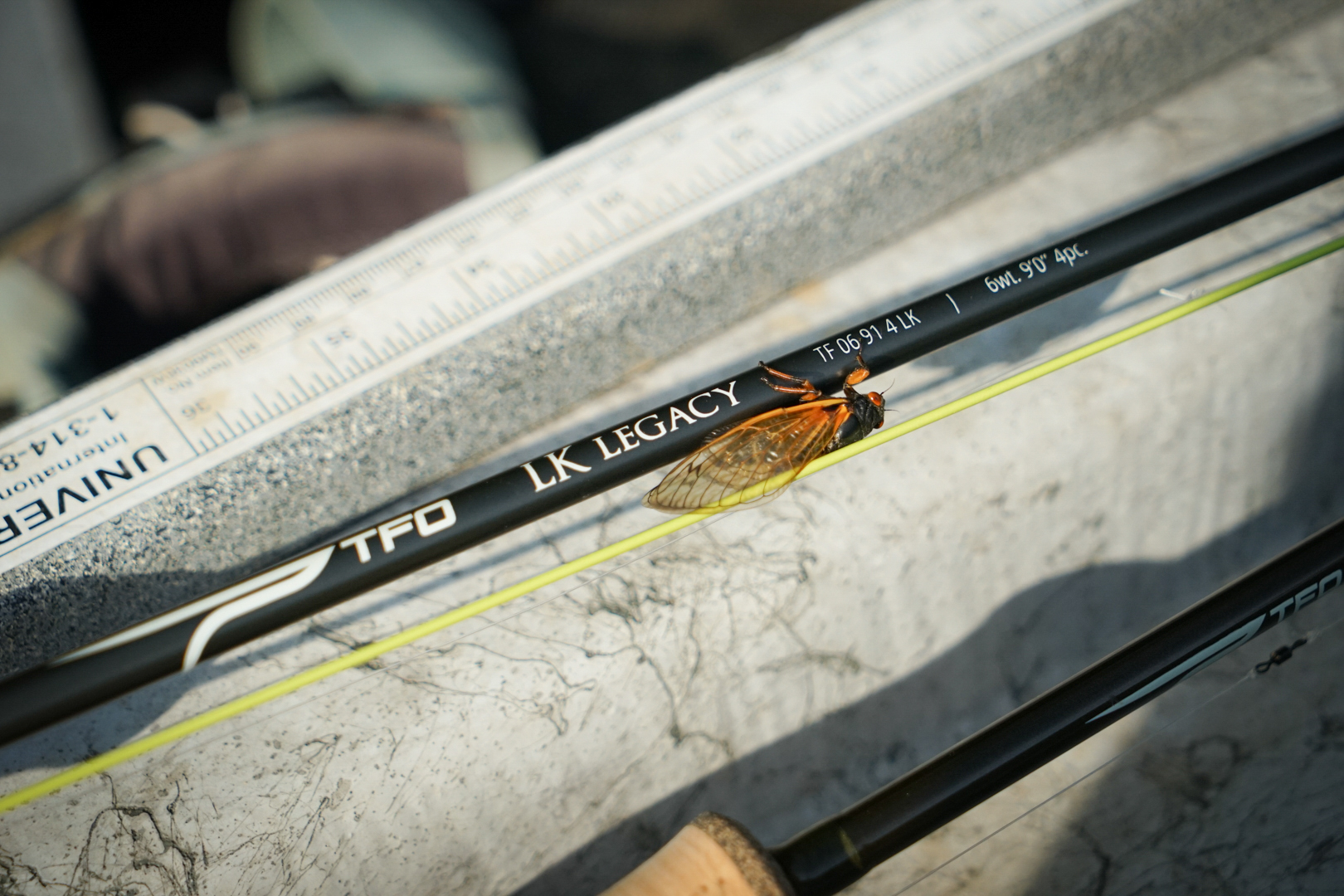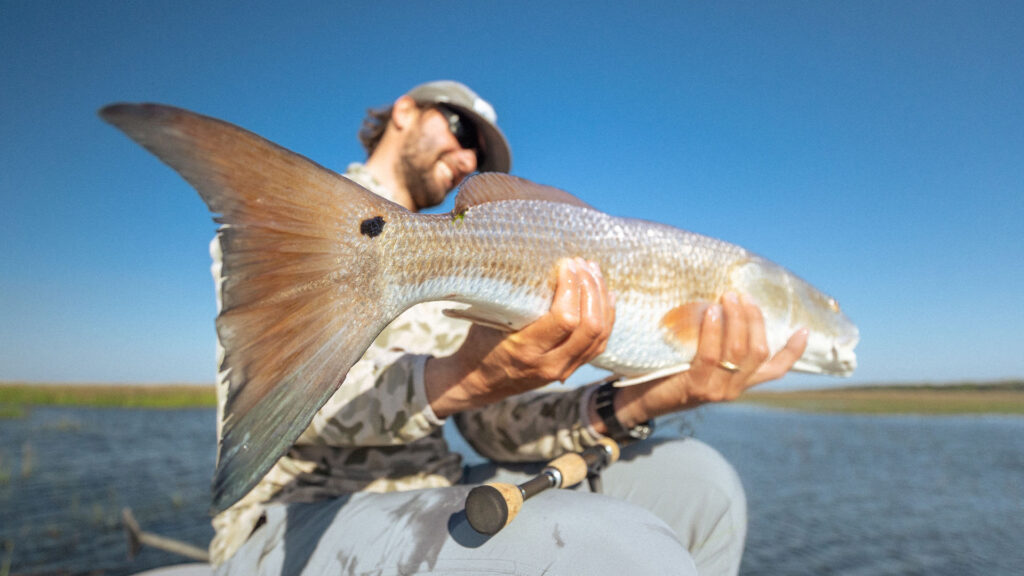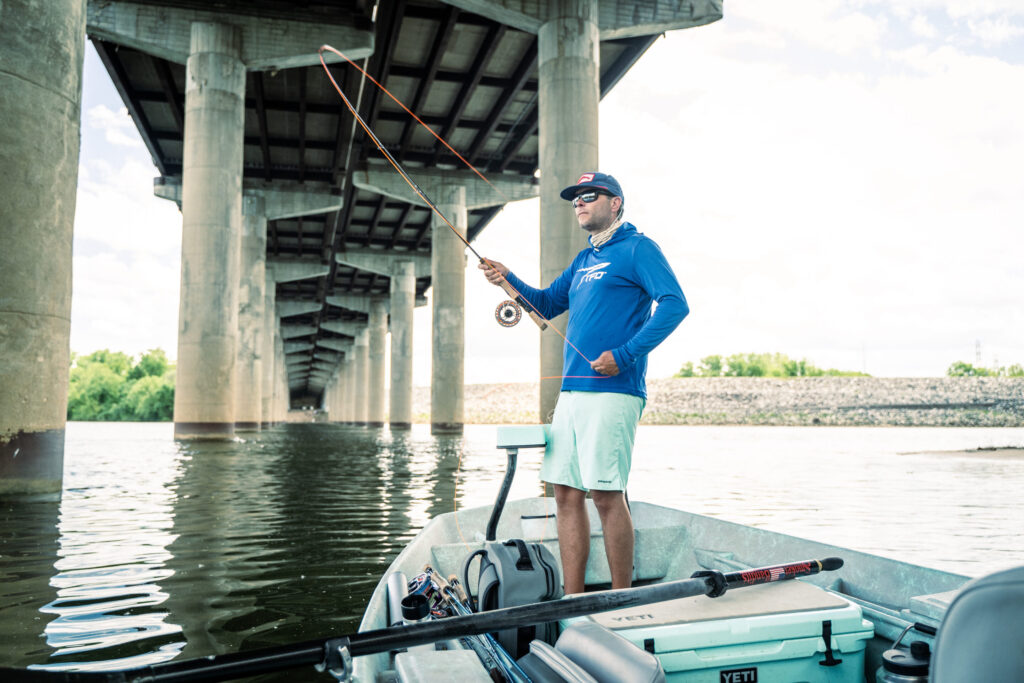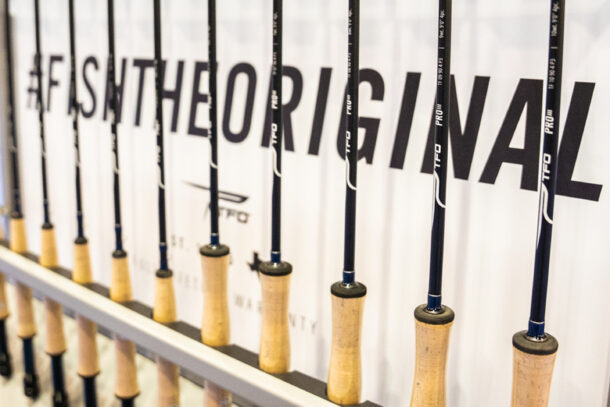It’s late May in East Tennessee and talk of the highly anticipated seventeen-year Brood X Cicada hatch fills the air (and social media newsfeeds) as loud as the droning buzz created by the large black and orange bugs as they emerge. News stations and local outdoor outfitters have been hyping up the natural phenomenon since January, and fly shops in my area have even made Cicada Mania t-shirts and stickers to commemorate the event.
I remember my sister-in-law was even curious about the event, asking, “What’s the big deal with these cicadas and fishing anyway?” after my brother and I began to look for dates to book a guided trip to get in on the action. My brother responded, “You know how in that 90’s surfer movie, Point Break with Patrick Swayze and Keanu Reaves and they’re searching for that perfect wave — the kind that comes only every 100 years? It’s like that for fishing – but it only happens every seventeen years, instead of 100”
I was skeptical about the whole event a few months ago. Is it really happening? Would my area even get the bugs? Will fish really key in on them like people say they will? Is this just a scheme for shops to sell more gear, flies, and t-shirts? My questions were answered on my latest trip on the river.

Photo: Tom Wetherington
I was lucky enough to have a good friend invite me out for a full day float trip on a local river in search of smallmouth and other warm water species. We were instructed from our guide to be prepared to throw a lot of topwater poppers, and to not be surprised if we saw some cicadas on the water. It was a good sign when we saw some right at the boat put in.
I was fortunate enough to get the LK Legacy 6wt with the fighting butt (06 91 4 LK) last summer and put it to the test on some smallmouth a few times before it got too cold. Paired up with the Scientific Anglers Titan Taper floating line, this rod is an absolute cannon for throwing topwater bugs, so I decided to use it again for the cicada patterns. I also brought along my Axiom ll 7wt. I usually use this rod (or the Axiom ll 8wt) paired up with a Rio Outbound Short line to use for crayfish patterns and small-medium sized baitfish patterns. This set up was perfect when we found deeper water, and the fish weren’t as keyed in on the surface. Both of these rods were paired up with my favorite reel – the large arbor BVK SD reel.

Photo: Tom Wetherington
With partly cloudy conditions and low water, we started out the morning with cicada patterns, and it wasn’t long before we made contact with fish. Over the course of the morning, we boated several redeye bass, a largemouth, several smallies, and even a rainbow trout on cicada patterns.

Photo: Tom Wetherington
The rest of the day had some slower stretches, but even when the cicada action wasn’t as hot, we still found some nice smallmouth on Boogle Bug poppers (black and white colors did best for us). We found a few shoals and deeper runs where the crawfish patterns produced well for us.

Photo: Tom Wetherington
Towards the end of the day, we found a stretch of water near a bank with trees that was absolutely roaring with cicadas. Underneath the tree, carp were rising sporadically, along with the occasional smallmouth. Bugs were dropping and the fish were slurping them from the surface. It was a sight I’ll never forget and it wasn’t long before I made a few casts with the 6wt LK Legacy and was hooked up with a nice mirror carp that couldn’t resist a cicada pattern.
We ended up fishing that stretch for about 30 minutes and caught several carp and smallmouth all on the cicada patterns. As much as we didn’t want to leave, we had to call it a day and head home before dusk.

Photo: Tom Wetherington
Advice & Takeaways
Visual Indicators
I haven’t gotten into tying foam patterns yet, so I bought all of mine from a local fly shop. There were a few times during this trip where my cicada pattern would land with the hook facing up. It wasn’t every time, but I definitely missed a few fish because of this. Make sure you know what side is riding up with your cicada pattern lands. There was a small orange piece of yarn to act as an indicator for this, but when making long casts under shaded banks, it can be difficult to see.
I’d recommend grabbing some thin bright colored foam to superglue on the topside of the fly if you are having trouble seeing the fly, or to act as a visual indicator to tell when your fly isn’t floating right. If you notice the pattern is riding upside down (hook up), just give your fly a few strips until you get it riding in the water correctly.
Also, make sure you have backup patterns ready to go. It wasn’t long after 4-5 catches with the first cicada pattern we used that we had to switch up and tie on a new one, as the fish usually hit it pretty hard. Pieces of material started to come loose, eyeballs fell off, and teeth marks in the foam started to make the pattern look like it had been thrown into a tree shredder. This is not a bad problem to have, but make sure you’ve got some reserves for when the bite really does pick up.
Movement
Cicadas will hit the water and make a pretty significant “splat” followed by a wave of ripples. While some fish might pick up on this noise, some may miss it and key in on the movement the bugs make after the cicada lands on the water. In other words, don’t be afraid to give the fly some additional movement. Once the cicadas hit the water, they will continue to move their legs in an effort to get back off the water, so replicating this survival twitching can be a great way to draw a fish’s attention. Small, one-inch strips will work. Don’t be afraid to pop the fly too, especially if a fish has decided to look away from your fly. This tactic was very helpful for me more than once when trying to get a carp to change directions when it was feasting on the surface.
Pro Tip – If fishing for carp, be sure to give a little extra time for the fly to get in the fishes mouth. There were definitely a few instances where I got too excited to catch a carp on topwater and pulled the fly right out of the fish’s mouth. I still have nightmares about losing these fish.

Photo: Tom Wetherington
Keep Your Eyes & Ears Open.
In my area, the cicadas are definitely out, but they are by no means flying around everywhere like a plague. It’s still early for their cycle, and the fish aren’t 100% keyed in on them yet.
Keep your ears open and listen for the loud drone of the cicadas. Chances are, you’ll hear them in the tree lines near the bank. If this is the case, drift (or wade) over to that area, and be on the lookout on the water for any bugs. Even if you don’t see any bugs on the water, or fish slurping the surface, don’t be afraid to make a few casts near the bank or in these areas. If it looks fishy – fish it!
Be patient, keep your eyes and ears out for bugs, and have fun!

Photo: Tom Wetherington
![]()
